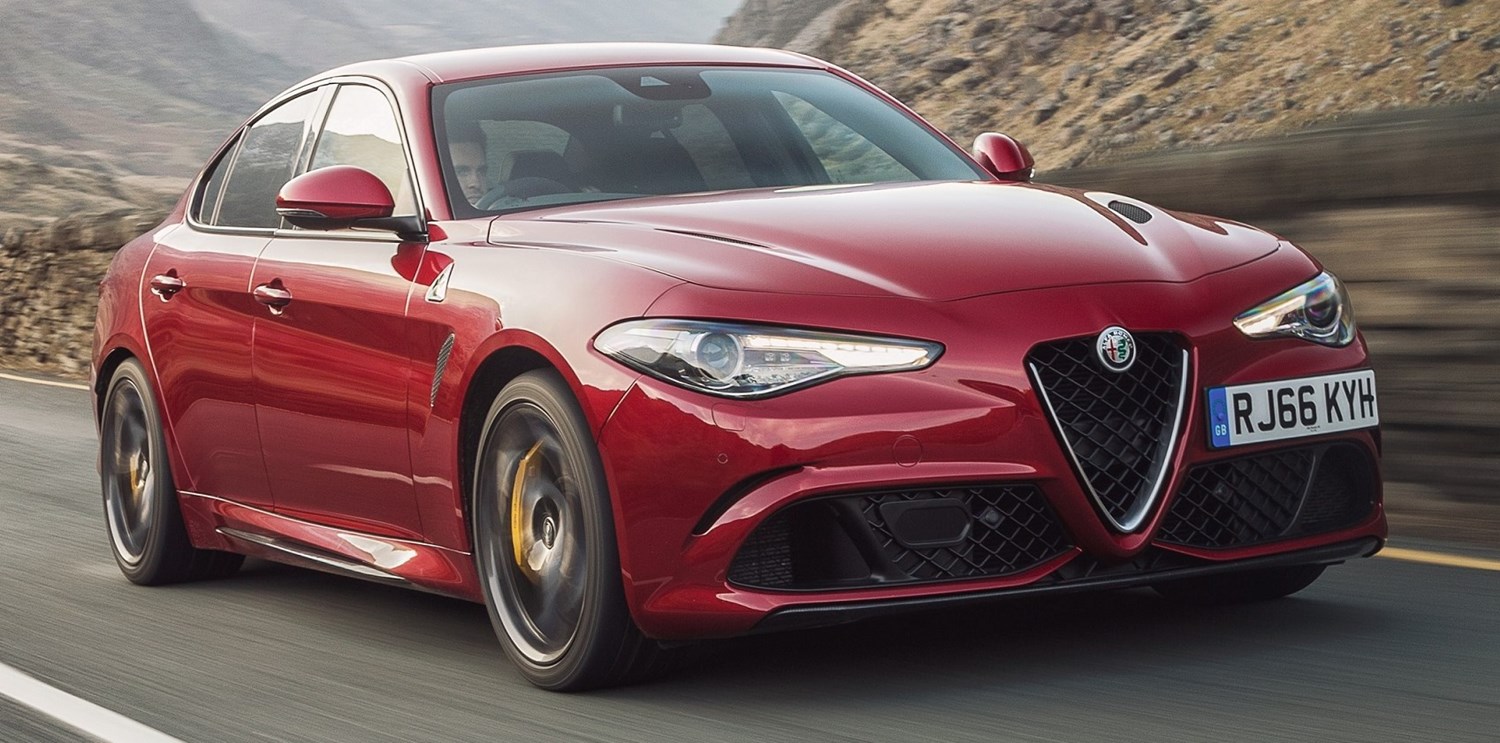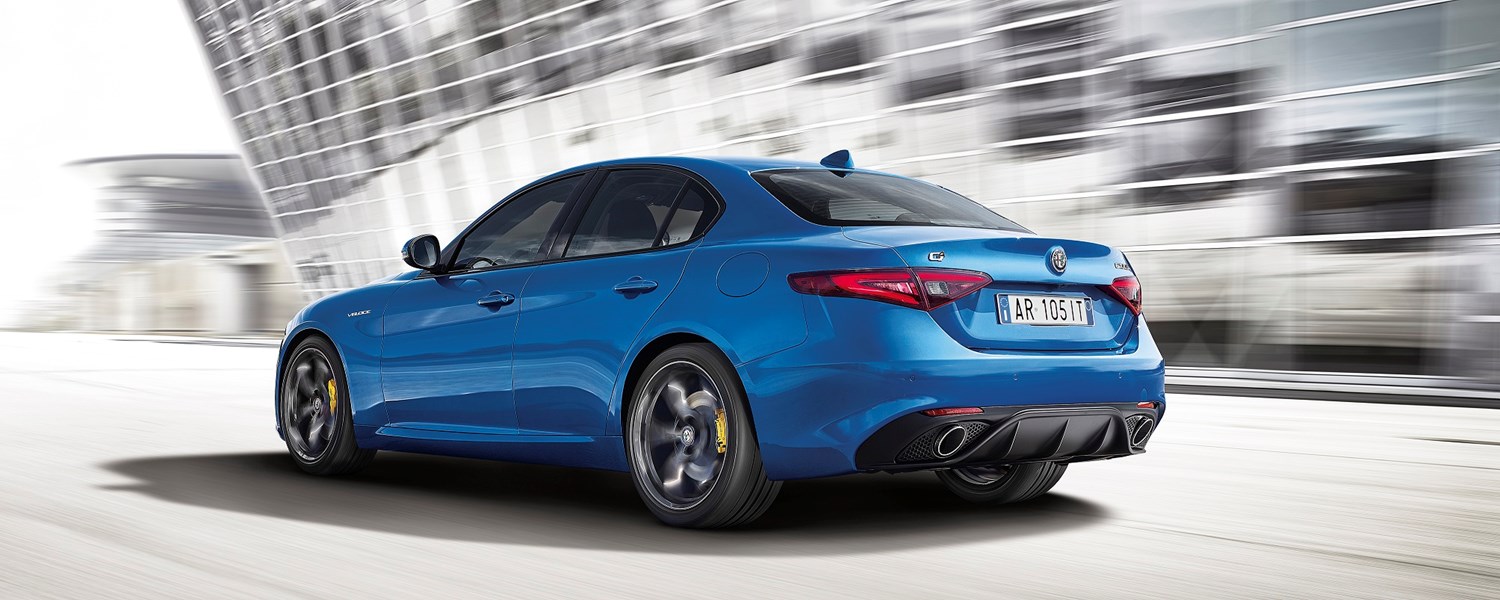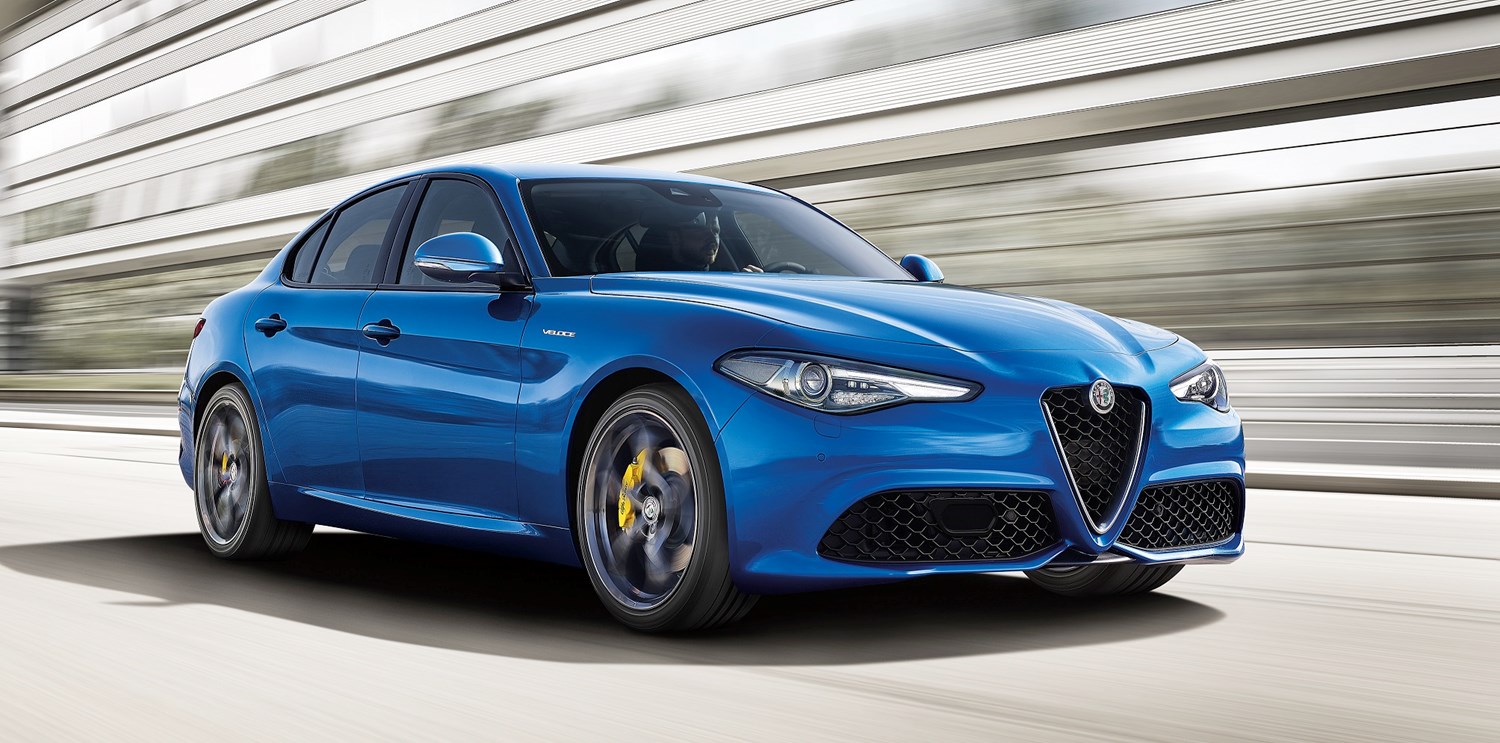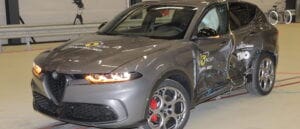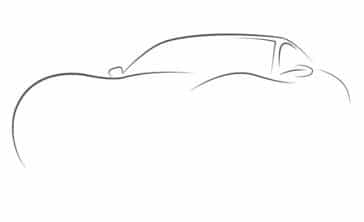Space and practicality
As it has one of the longest wheelbases in the class, the Giulia has plenty of passenger space and although some rivals are marginally larger, the Giulia is packaged well enough and actually offers more usable space.
Boot space is exactly the same as its main rival, the BMW 3 Series, at 480 litres, but due to the body shape the boot lip is higher and the opening is smaller so access is not as good as it could be. Storage spaces inside are less numerous also, but you still get a well-sized glovebox and front-door storage bins.
Safety-wise the Giulia stacks up well as it gets a five-star rating from Euro NCAP and rates well in the main categories. An impressive adult occupant score of 98 per cent is the highlight of the bunch, with child occupant safety at 81 per cent, a score of 69 per cent for pedestrians and 60 per cent for safety assist.
As standard you get autonomous emergency braking, lane departure warning, rear parking sensors and airbags with all Giulias, while the driving assistance plus pack adds blind spot detection, automatic high beam system and a rear view camera.
For families looking for a stylish, practical and safe saloon, this could be perfect for them as you do get Isofix points on two of the rear seats as well as the aforementioned safety systems, so the only thing that may concern is the sometimes firm suspension. Admittedly the Giulia lacks an estate version that could make this even more attractive for families, but it does well enough as a saloon model for size and practicality.
Engines
There are two engines on offer with two states of tune each – a 2.0-litre turbo petrol with 200bhp and 280bhp units, and a 2.2-litre turbo diesel with 150bhp and 180bhp options. The super-saloon QV model comes with a 2.9-litre turbocharged petrol that produces a staggering 510bhp and goes like a rocket ship.
The diesel engines will attract customers needing to travel long distances due to its higher fuel efficiency over the petrol models and will pull well, but they can both feel and sound grumbly. The petrol units are less efficient and will cause you to go to the pump more, but the sound it makes, the smoothness of delivery and high-revving nature will mean it is more fun to have around.
If you want to make the most of your Giulia, swallow the cost and go for the petrol options. All engines only come with the eight-speed automatic gearbox.
The diesel engines will attract customers needing to travel long distances due to its higher fuel efficiency over the petrol models and will pull well, but they can both feel and sound grumbly.
The petrol units are less efficient and will cause you to go to the pump more, but the sound it makes, the smoothness of delivery and high-revving nature will mean it is more fun to have around. If you want to make the most of your Giulia, swallow the cost and go for the petrol options. All engines only come with the eight-speed automatic gearbox.
Running costs
As you would expect, the diesel models are the best for day-to-day running thanks to their improved mpg of 67, emissions of 109g/km and lower insurance groups (22 to 27). That also means a road tax payment of £140 for the first year, which is the best in the line-up. But considering the power output and performance, the base 2.0-litre petrol is surprisingly useful with 47mpg and insurance group 24, but that is slightly offset by a first year road tax cost of £200.
The Veloce model with the 280bhp 2.0-litre petrol also does well for fuel efficiency and insurance, but again emissions let the side down. The Quadrifoglio model has road tax at £800 for the first year and not exceptional fuel economy, so unless you can swallow the cost it’s best looking at the less powerful models.
